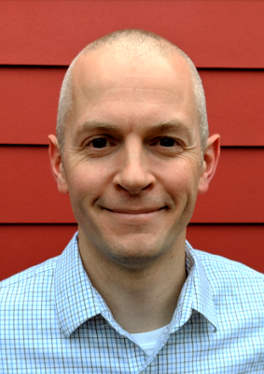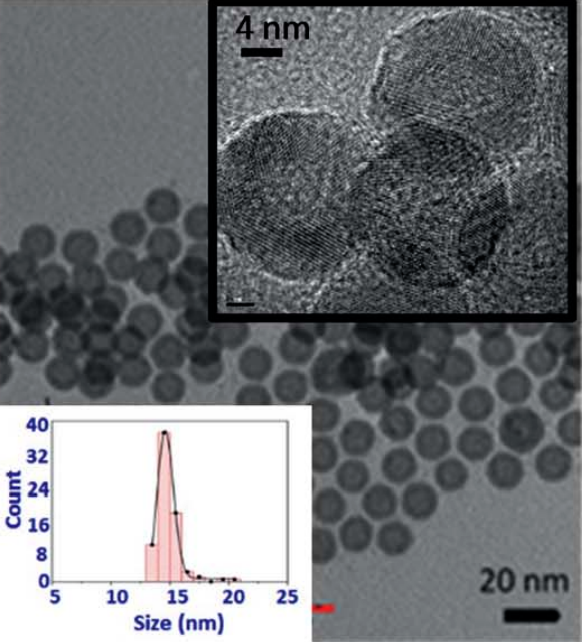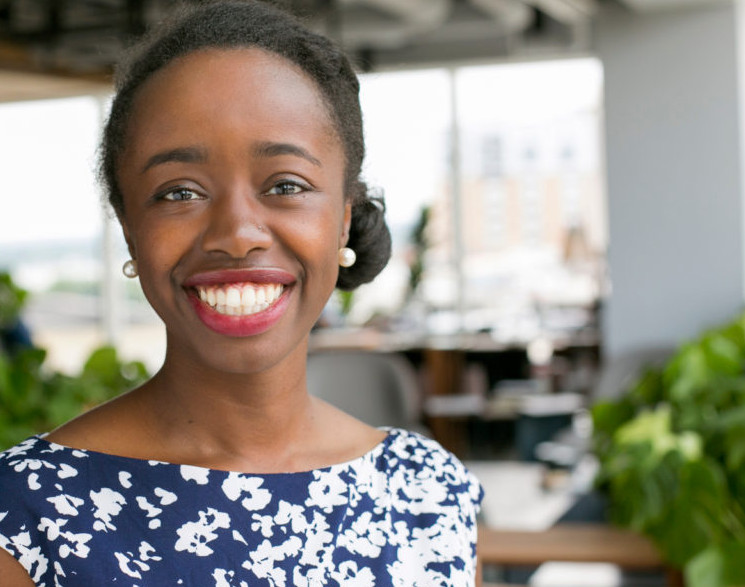IEEE-Madison October Newsletter

Madison Section Newsletter
Vol. 22, No. 10 Serving IEEE Members of South Central Wisconsin October2019
Newsletters are archived online at IEEE-Madison
Upcoming Meetings
Power Electronics for Medium Voltage Distribution Networks Applications
IEEE-Madison PES/IAS Chapter
Date: Monday, October 21st
UW Engineering Hall, Room TBD
Event Info
Tuning Magnetic Anisotropy in Nanostructures for Biomedical Appications
IEEE-Madison Joint Section/ EMB18 Chapter
Date: Friday, October 25th
UW Engineering Hall, Room 2534
Event Info
Made by Them: Maydm's Pursuit of Boldness, Quality, Inclusion, and Reflection in Tech
IEEE-Madison Joint Section/ LMAG Meeting
Date: Thursday, November 7th
UW-Space Place
Event Info
Upcoming Meetings Info
Past Meeting Reviews
News/Announcements
Section Elections! See below for more information
Sponsored Content: DLS EMC
Upcoming Meetings
October PES/IAS Meeting
"Power Electronics for Medium Voltage Distribution Networks"

- Monday, October 21st, 5:30 PM to 7:00 PM
- Patrick Flannery, American Superconductor, Inc.
- Location:
UW-Madison, Engineering Hall Room (TBD)
51415 Engineering Drive, Madison WI 53706 - Please Register at the IEEE-Madison event page.
Talk: Distribution utilities are under pressure to accommodate distributed energy generation, solar, electric vehicles, and other unconventional or bi-directional "loads". These varying loads create voltage quality problems at the medium voltage level not easily corrected with conventional voltage regulators, switched cap banks, etc.
AMSC has developed a power electronic device (D-VAR VVO) that connects directly to the medium voltage distribution grid (without a transformer) for the correction of voltage quality problems. The D-VAR VVO can be sited anywhere a voltage regulator can, and can be installed by utility line crews.
That said, practitioners of power electronics and electric power engineering bring different sets of ideas and expectations to product features, usability, reliability, etc. The technical features of the D-VAR VVO will be introduced and serve to motivate stories and surprises from the VVO product.
Bio: Patrick Flannery is the Director of Research Engineering at AMSC (American Superconductor). He has been with AMSC since late 2008 where he has worked on low and medium voltage power electronics hardware and control systems applied to utility scale wind turbines and STATCOMs. Notable projects include the development of advanced embedded control platforms, leading the LVRT certification testing of several MW-class wind turbines, and leading the development of AMSC's VVO STATCOM product.
He was a Senior Engineer with Soft Switching Technologies (now part of Rockwell Automation) in 2008.
From 1998 to 2001, he worked as an embedded systems and electro-mechanical engineer with CSA Engineering on active vibration cancellation systems.
Patrick has a B.S. in mechanical engineering from the Pennsylvania State University (1998), and M.S. and Ph.D degrees in electrical engineering from the University of Wisconsin-Madison (2003, 2008).
October Joint Section/EMB18 Meeting
"Tuning magnetic anisotropy in nanostructures for biomedical applications"

- Friday, October 25th, 11:30 AM to 1:00 PM
- Dr. Hari Srikanth. Dept. of Physics, University of South Florida
- Location:
Engineering Hall
1415 Johnson Street, Madison WI 53706
Room 2534
- Please Register at the IEEE-Madison event page.
Talk: Magnetic nanoparticles have been building blocks in applications ranging from high density recording to spintronics and nanomedicine. Magnetic anisotropies in nanoparticles arising from surfaces, shapes and interfaces in hybrid structures are important in determining the functional response in various applications. In this talk I will first introduce the basic aspects of anisotropy, how to tune it in nanostructures and ways to measure it. I will discuss resonant RF transverse susceptibility, that we have used extensively, as a powerful method to probe the effective anisotropy in magnetic materials. Tuning anisotropy has a direct impact on the performance of functional magnetic nanoparticles in biomedical applications such as contrast enhancement in MRI and magnetic hyperthermia cancer therapy. There is a need to improve the specific absorption rate (SAR) or heating efficiency of nanoparticles for hyperthermia and I will focus on the role of tuning surface and interfacial anisotropy with a goal to enhance SAR. Strategies going beyond simple spherical structures such as exchange coupled core-shell nanoparticles, nanowire, nanotube geometries can be exploited to increase saturation magnetization, effective anisotropy and heating efficiency in magnetic hyperthermia. This lecture will combine insights into fundamental physics of magnetic nanostructures along with recent research advances in their application in nanomedicine.
Bio: Hari Srikanth is a Professor of Physics at the University of South Florida in Tampa, FL. He received his Ph.D. in experimental condensed matter physics from the Indian Institute of Science. After postdoctoral research for several years, Hari joined USF in 2000 and established the Functional Materials Laboratory. His research spans a wide range of topics including magnetization dynamics in nanostructures, applications of magnetic nanoparticles in nanomedicine and RF devices, magnetic refrigerant materials, spin calorics, microwave materials and complex oxides with competing magnetic phases. He has over 250 publications and has given over 200 invited talks around the world. Hari has developed a short tutorial on nanomagnetism, enjoys delivering pedagogical lectures for a broad audience and especially interacting with students and early career researchers. Hari is a Fellow of the American Physical Society, with the citation mentioning his contributions in the field of nanomagnetism, and a Senior Member of IEEE. He is currently an Associate Editor for Journal of Applied Physics. Hari has been closely involved with the MMM and INTERMAG conferences for more than 15 years serving as Publication Editor, Publication Chair and on program committees. He is also a 2019 Fulbright awardee. Hari has been a short term visiting professor in Slovak Academy of Sciences (Kosice), Basque Center for Materials (Bilbao), Indian Institute of Technology (Bombay), Indian Institute of Science (Bangalore), Federal University of Rio de Janeiro (Brazil) and Immanuel Kant Baltic Federal University (Kaliningrad)
November Joint Section/LMAG Meeting
"Made by Them: Maydm's Pursuit of Boldness, Quality, Inclusion, and Reflection in Tech"

- Thursday, November 7th, 11:30 AM to 1:00 PM
- Winnie Karanja, Maydm, Inc.
- Location:
UW Space Place
2300 South Park Street, Madison WI 53713
Suite 100, Atrium -- Lower Level
- Please Register at the IEEE-Madison event page.
STEM Talk: In 2018, a study by The Equality of Opportunity Project, showed that children at the top of their 3rd grade math class are much more likely to become inventors, but ONLY if they come from high-income families. These were the students who had the necessary exposure to inventors and inventions to pursue a similar career pathway.
The core mission of Maydm is to equip and engage girls and students of color with opportunities in the technology sector through immersive programs that are an integration of technical skills, mentorship and exposure. We offer project-based out-of-school programs that have children building and creating, exposing them to technology, developers, innovation and industries among us.
We stand behind our students and fight for them to have the exposure opportunities, relationships, AND skills because we want to see technology made by them. We want to see the innovation they're capable of, the different ideas and perspectives they offer, and the products they create.
IEEE Matching Donations for Maydm: In support of STEM programs, the IEEE Madison Section will match any donations (to a $1000 total limit) to Maydm's STEM program. Maydm, a 501(c)(3) organization, would use your tax-deductible donation to build and enhance STEM programs. This would support the development of Maydm's immersive summer web development programs including curriculum and assessment creation, program materials, and student scholarships.
Bio: Winnie Karanja is the Founder and Executive Director of Maydm, an organization focused on equipping girls and youth of color in grades 6-12 with skill-based training for the technology sector through workshops and summer programs. With a background in education, technology and workforce development, Winnie has worked on national data projects, has led economic development initiatives, and is committed to equipping youth in utilizing and understanding the power of technology to fuel their dreams.
Winnie holds a Master of Science in Development Studies from the London School of Economics and Political Science and a Bachelor of Arts in Education and International Politics.
In her free time Winnie enjoys being outside, reading, and finding all the best food destinations.
Review of Past Meetings
- September LENR/Bob Greenyer ECN and Section Meetings: Bob Greenyer spoke at two separate events in Madison on Wednesday, September 4th. The first talk, or the IEEE-Madison Entrepreneur and Consultants Network, was an impromptu discussion of Bob’s work with the Martin Fleischmann Memorial Project over a number of years aimed at identifying avenues for LENR reaction replication. Bob discussed a number of efforts and the common signatures that tied them all together. Bob said that replication is very difficult and most efforts fall short because the replicators did not follow the exact recipe, in part because the original recipe was incomplete. He is searching for a simple, fault-tolerant recipe that can be duplicated with a good chance of success. His last trip to Japan Japan to investigate the effects of OHMASA Gas on metals has identified what he thinks is such a fault-tolerant experiment that can be replicated. Bob brought samples with him that had shown unambiguous evidence of elemental transformations in metal subjected to the OHMASA Gas flame.
His feeling was that the first commercial application of LENR technology would be to remediate nuclear disasters cleanup, allowing new nuclear fission reactors to overcome public pushback.
An attendees asked Bob a question about how the mainline scientific community can be made aware of the evidence for LENR reactions. In particular they don’t believe that there is any way that a LENR reaction can overcome the coulomb barrier. Bob mentioned that scientists often do not read each other’s papers. There is abundant evidence, but scientists do not read the papers. From Bob’s evidence there is no way that you can conclude that the barrier has not been overcome. Bob touched on Alexander Parkhomov’s theory that neutrinos are involved in the transformation.
View a YouTube video of the meeting here.
After the meeting, Hugh Schmidt and Tom Kaminski accompanied Bob Greenyer to the UW-Madison the Geology Department where a sample of titanium subjected to heating with OHMAS Gas was analyzed on a Scanning Electron Microscope. It was interesting observing the Geology Department researchers as the examined the sample. They had never seen anything like it. In addition to a feathery titanium crystalline structure, fine whiskers of a succession of materials not present in the original metal appeared. A summary report is available here.
The evening meeting included a more formal presentation with slides and images. Bob discussed in detail the common signatures across a number of reactions. He introduced a reaction database that shows the most likely outcomes (elemental transformations) in LENR reactions. Each piece of evidence he analyzed included elements predicted by the database. The database is on line for anyone to access, free. Bob did not successfully record the presentation on video, but a backup video was recorded and is uploaded to a shared drive. If you are interested in viewing it, please mail tjkaminski@ieee.org for a link. It will eventually be posted in a YouTube video with embedded slides. - September PES/IAS Meeting: Every year, the US and other nations break records on the share of energy production that comes from renewable resources. Utility-scale renewables lead to higher -- and more variable -- network flows. As a weather system moves across an area, flows can reverse within the matter of a few hours.
On September 9, Dr. Line Roald (Assistant Professor of Electrical and Computer Engineering at the University of Wisconsin and Fellow of the Grainger Institute) spoke to the Madison Chapter of PES/IAS (Power and Energy Society and Industry Applications Society) on her research into optimization under stochastic conditions.
Solving the Operational Power Flow equations under conditions in which many injections of both real and reactive power are stochastic in nature requires new approaches. Quantifying the risk associated with any scenario is difficult, especially when the system has a multiplicity of unrelated risks.
Dr. Roald's work is expected to lead to solutions for these problems. In addition to applying to the bulk transmission system, her research can also be used to deal with feeders. This is a significantly moredifficult problem, as its solution needs to use an unbalanced 3-phase power flow. But it can lead to techniques that allow allocating DERs (distributed energy resources) to feeder phases so that the feeders are (usually) balanced.
Her slides are here.
Upcoming Meetings
- PES/IAS Meetings: Patrick Flannery of American Superconductor will be presenting at an October 21sth Meeting. Many of you have been following the AMSC business over the years. This is a chance to hear about some of their latest technical work. The planned Wireless Charger test was put on hold while the possible effects on bio-implanted devices is investigated. It will happen once it is confirmed to be safe. PES/IAS is working on having a November Meeting as well.
- Joint Section/LMAG Meeting: Winnie Karanja will speak at a meeting featuring STEM activities in Madison. The meeting will be held at UW Space Place in South Madison in a facility that also holed the Wisconsin Science Museum. Winnie's organization, Maydm, Inc. is focused on educating young girls of color in STEM careers. Maydm, a 501(c)(3) organization with excellent ratings has held numerous events for youth including web design, programming, robotics, and MakerSpace activities. See this link for a description if upcoming Maydm activities.
In support of IEEE's goal of increasing minority and women in engineering, the IEEE-Madison Section will be matching donations to Maydm from IEEE Madison Section members. Please give generously and note on your donation "IEEE Match".
News/Announcements
- Section Elections: Are you interested in becoming an office in the IEEE Madison Section, or one of its Chapters or Affiliates? If so, please let Hugh Schmidt know (hfschmidt@wisc.edu).
- Volunteers: We need volunteers for: YP, ECN, LAMG, Section and EMB.
- Volunteer Appreciation Event: Join us on December 19th at 5:30 PM to 8:00 PM for a social event honoring all of the IEEE-Madison Section Volunteers for 2019. The event will include free appetizers and a cash bar (two drinks free for volunteers) at Brasserie V on Monroe Street.
- Retired Engineer gets Cubs Ball Toss: Bill Lill, a retired EMC engineer from D.L.S. Electronic Systems (one of our supporters running ads in the Newsletter) got to throw out the ball at a recent Cubs game. Bill just celebrated his 92nd birthday, (October 4). Read about it at this link.
IEEE Madison Leadership
- Section Chair – Nate Toth
- Section Vice Chair – Hugh Schmidt
- Section Treasurer – Tom Kaminski
- Section Secretary – Mike Stemper
- Webmaster – Nate Toth
- PES/IAS Chair – Dan Ludois
- PES/IAS Vice Chair – Eric Severson
- PES/IAS Secretary/Treasurer- Mike Stemper
- EMB Chapter Chair – Dennis Bahr
- Life Member Affinity Group Chair – San Rotter
- Life Member Affinity Group Vice Chair – Charles Cowie
- ECN Chair – Tom Kaminski
- Young Professionals Chair – Nate Toth
- Members at Large: Clark Johnson, Craig Heilman, Dennis Bahr, San Rotter.
Membership Upgrades
Those interested in upgrading their IEEE membership level should be aware that the process has been streamlined with much of it on-line. The application process can start with your application as described on line here. You will have to provide the names and IEEE numbers for three Senior Members in your field. The Madison Section Chair ( Nate Toth at tothnj@ieee.org) can help, or attend the informal networking portion of the monthly Section meetings to meet the Section Board members and discuss your intention to elevate.
About IEEE
The Institute of Electrical and Electronics Engineers or IEEE (read Eye-Triple-E) is an international non-profit, professional organization dedicated to advancing technology innovation and excellence for the betterment of humanity. IEEE and its members inspire a global community through IEEE’s highly cited publications, conferences, technology standards, and professional and educational activities. It has the most members of any technical professional organization in the world, with more than 300,000 members in around 150 countries. The IEEE consists of 38 societies, organized around specialized technical fields, with more than 300 local organizations that hold regular meetings. Discover what IEEE Member Discounts can offer you. The Member Discounts portfolio consists of insurance products and programs for the home, office and travel, all at excellent group rates and reduced pricing. Visit IEEE Member Discounts to see what’s available in your location and enjoy the savings. For more information, please visit: IEEE.ORG.
Sponsored Content




